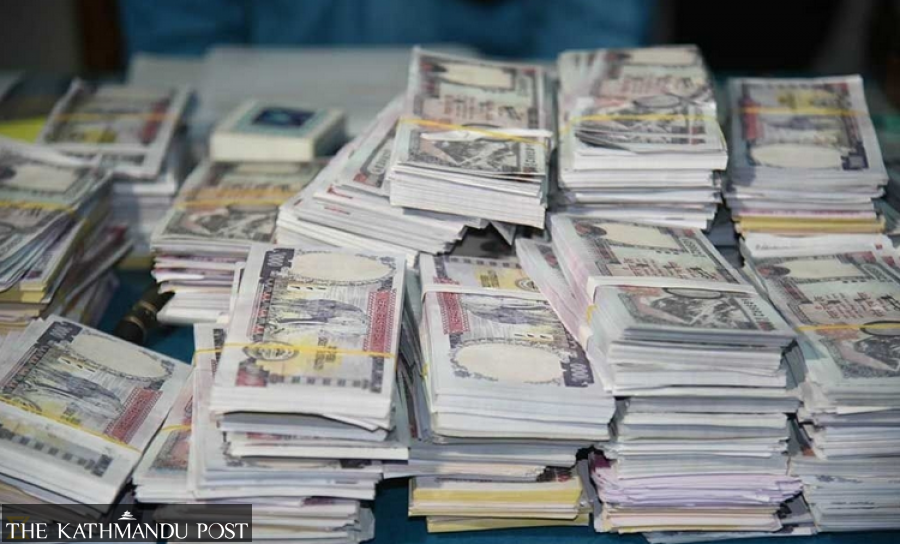Money
Government delays raising internal loans amid liquidity crunch in the banking system
Internal debt to be raised in small amounts initially until liquidity situation improves along with increased government spending, officials say.
Prithvi Man Shrestha
Last fiscal year, the government had started raising internal loans in early October. But this year, with the month coming to its end, the government has yet to decide when domestic debt would be raised.
The Sher Bahadur Deuba government downsized the internal loans to be raised in the current fiscal year to Rs239 billion through the replacement bill from Rs250 billion proposed by the previous KP Sharma Oli-led government. The replacement bill was endorsed by the House of Representatives on September 20 and by the National Assembly on September 24.
“The main reason behind the delay is the amendment made to the previous budget, as it created uncertainty in planning,” Hira Neupane, under-secretary at the Public Debt Management Office, told the Post. “As far as I know, the schedule of raising the internal loans has already reached the Finance Ministry. The Ministry is expected to take a decision on the matter within a week.”
Neupane added that the government could start raising the internal loans in mid-November.
But another official at the office told the Post on condition of anonymity that besides amendment to the budget, the current liquidity crunch in the banking system also prompted the government to delay the schedule of raising the internal loans.
According to the official, the Open Market Operation Committee headed by deputy governor of Nepal Rastra Bank has already recommended the schedule of raising internal loans, and the loans would probably be raised from Mangsir (after mid-November).
“As per the recommendation, the government will not raise a large sum of debt anytime soon, as the banking system is facing a shortage of loanable funds,” the official said. “Initially, the government will issue debt instruments to raise small amounts in loans. When the liquidity situation improves along with the government's increased spending, the larger amount of debts will be raised.”
Treasury Bills, Development Bonds, Citizens Saving Bonds, National Saving Bonds, and Foreign Employment Saving Bonds are debt instruments the governments have been using to raise internal loans.
According to the official, the Open Market Operation Committee is initially preparing to raise loans in small amounts because raising large amounts at the time of a liquidity crunch requires higher interest rates.
The banking system is in a liquidity crunch because of excessive lending compared to deposit collection during the first three months of the current fiscal year.
According to the central bank, the banks and financial institutions provided loans of around Rs326 billion in the first quarter of the current fiscal year compared to deposit collections of around Rs100 billion. As a result, the credit to deposit ratio of a large number of banks has crossed the regulatory limits of 90 percent, effectively preventing them from making further lending without increasing their deposits. This has pushed the interest rates of both deposits and credits up.
With remittance decreasing and government spending remaining poor, deposits in the banking system could not grow sufficiently to balance the excessive lending.
According to the central bank, the inflow of remittances decreased by 6.3 percent to Rs155.37 billion. The government’s overall spending as of Thursday stood at 15.46 percent of the total allocated budget and capital spending remained poorer with 3.75 percent of the allocated amount, according to the Financial Comptroller General Office, which is responsible for maintaining records of the government’s income and expenditure.
Officials admit that it is better to raise internal loans and take into consideration the liquidity situation in the banking system and the government’s spending.
“What do we do by raising the internal loans if the government cannot spend the resources,” said Dev Kumar Dhakal, spokesperson at the central bank. “I think the schedule of raising debt has been prepared by looking into both government spending and liquidity crunch.”




 18.12°C Kathmandu
18.12°C Kathmandu















